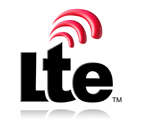LTE UE (User Equipment) Category & Class Definitions
LTE utilises the LTE UE Category or User Equipment categories or classes to define the performance specifications of LTE devices and enables LTE base stations to be able to communicate effectively with them knowing their performance levels. Some LTE UE Categories such as LTE Cat 3, LTE Cat 4 and LTE Cat 0 are widely quoted and used. Other like LTE Cat 7 and LTE Cat 8 are much newer.

In the same way that a variety of other systems adopted different categories for the handsets or user equipments, so too there are 3G LTE UE categories. These LTE categories define the standards to which a particular handset, dongle or other equipment will operate.
Our LTE CPEs support the latest released UE categories for high performance and capacity
Current 4G and future 5G networks will run faster with high speed UE category devices.
LTE UE category definitions

There are 9 different LTE UE categories that are defined. As can be seen in the table below, the different LTE categories have a wide range in the supported parameters and performance. LTE category 1, for example does not support MIMO, but LTE UE category five supports 4×4 MIMO.
It is also worth noting that UE class 1 does not offer the performance offered by that of the highest performance HSPA category. Additionally all LTE UE categories are capable of receiving transmissions from up to four antenna ports.
3GPP Release 8 defines five LTE user equipment categories depending on maximum peak data rate and MIMO capabilities support. With 3GPP Release 10, which is referred to as LTE Advanced, three new categories have been introduced, and four more with 3GPP Release 11.
| User equipment Category |
Max. L1 datarate Downlink (Mbit/s) |
Max. number of DL MIMO layers |
Max. L1 datarate Uplink (Mbit/s) |
3GPP Release |
|---|---|---|---|---|
| NB1 | 0.68 | 1 | 1.0 | Rel 13 |
| M1 | 1.0 | 1 | 1.0 | |
| 0 | 1.0 | 1 | 1.0 | Rel 12 |
| 1 | 10.3 | 1 | 5.2 | Rel 8 |
| 2 | 51.0 | 2 | 25.5 | |
| 3 | 102.0 | 2 | 51.0 | |
| 4 | 150.8 | 2 | 51.0 | |
| 5 | 299.6 | 4 | 75.4 | |
| 6 | 301.5 | 2 or 4 | 51.0 | Rel 10 |
| 7 | 301.5 | 2 or 4 | 102.0 | |
| 8 | 2,998.6 | 8 | 1,497.8 | |
| 9 | 452.2 | 2 or 4 | 51.0 | Rel 11 |
| 10 | 452.2 | 2 or 4 | 102.0 | |
| 11 | 603.0 | 2 or 4 | 51.0 | |
| 12 | 603.0 | 2 or 4 | 102.0 | |
| 13 | 391.7 | 2 or 4 | 150.8 | Rel 12 |
| 14 | 3,917 | 8 | 9,585 | |
| 15 | 750 | 2 or 4 | 226 | |
| 16 | 979 | 2 or 4 | n/a | |
| 17 | 25,065 | 8 | n/a | Rel 13 |
| 18 | 1174 | 2 or 4 or 8 | n/a | |
| 19 | 1566 | 2 or 4 or 8 | n/a |
Note: Maximum datarates shown are for 20 MHz of channel bandwidth. Categories 6 and above include datarates from combining multiple 20 MHz channels using Carrier Aggregation. Maximum datarates will be lower if less bandwidth is utilized.
Note: These are L1 transport data rates not including the different protocol layers overhead. Depending on cell BW, cell load, network configuration, the performance of the UE used, propagation conditions, etc. practical data rates will vary.
Note: The 3.0 Gbit/s / 1.5 Gbit/s data rate specified as Category 8 is near the peak aggregate data rate for a base station sector. A more realistic maximum data rate for a single user is 1.2 Gbit/s (downlink) and 600 Mbit/s (uplink). One vendor has demonstrated downlink speeds of 1.4 Gbit/s using 100 MHz of aggregated spectrum.
For Further Information
Please Contact Us
